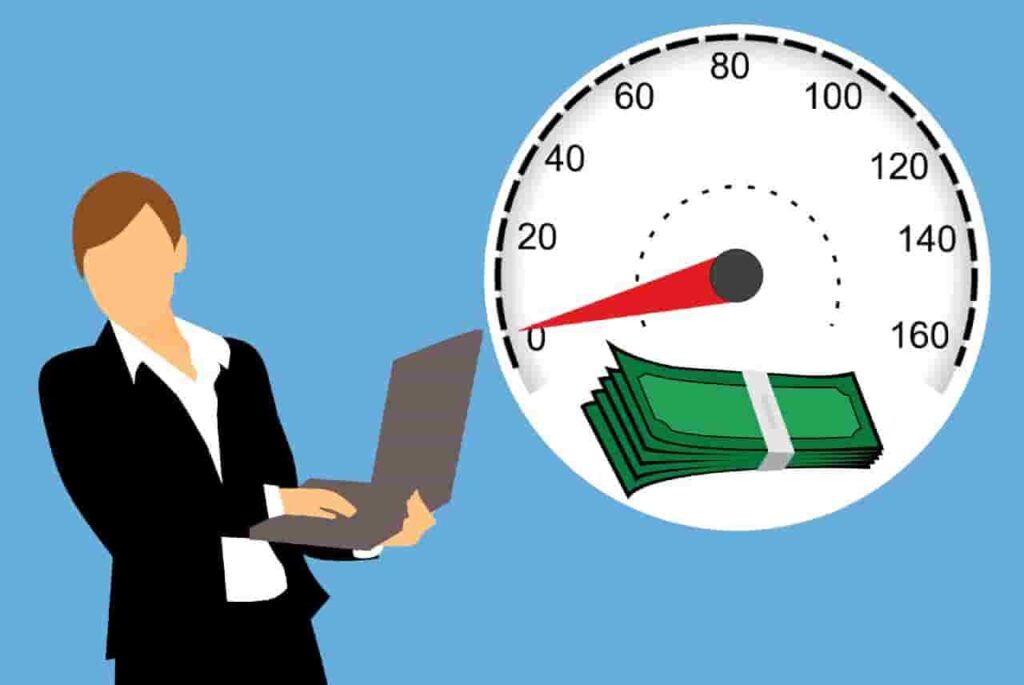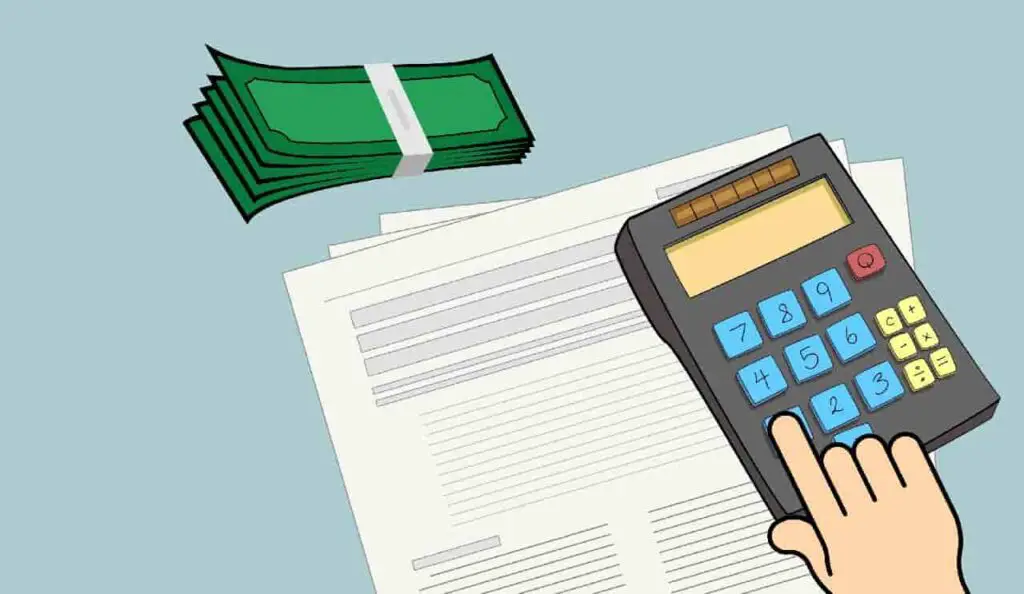Have you ever gotten your credit report and noticed something along the lines of “proportion of loan balances to loan amounts is too high” on it? Most people with existing loans have, and on most occasions, don’t know what it means or how to get rid of it. If this sounds all too familiar, this is a post you don’t want to miss.
“Proportion of loan balances to loan amounts is too high” means that you have a high loan utilization rate. The loan utilization rate is a ratio that compares outstanding balances on an installment loan to the principal amount to show how much you owe. You can lower it by paying down your loan.
Read on for details on what this rate means, how it’s calculated, what causes the above statement to appear on your credit report, and how to get rid of it.
What Does “Proportion of Loan Balances To Loan Amounts Is Too High” Mean?
Usually, this reason code will appear as one of the key factors affecting your score, with a red downward arrow indicating that its effect is negative. The proportion of loan balances to loan amounts reflects your overall installment loan utilization rate, a term you need to be familiar with to understand what it means when the above statement appears on your credit report. It’s one of many reasons to avoid student loans.
Your installment loan utilization rate compares the outstanding balances of your installment loans (both mortgaged and non-mortgage) to the original loan amounts. This ratio is expressed as a percentage; divide your current loan balance by the original loan amount. Essentially, this percentage evaluates how much you still owe on your installment loans, and lenders typically use it to assess your creditworthiness.

Usually, your loan balance will be high when you first obtain an installment loan because you haven’t covered much ground towards paying it down. Enticing deals from online store credit cards with guaranteed approval are usually the cause of high loan balances. With every payment you make, the loan balance decreases, subsequently lowering the proportion of the loan balance to the original loan amount. So if your credit report indicates that this ratio is high, it simply means that you have high loan balances compared to the original amounts.
As someone who has experienced the impact of high loan balances firsthand, I can tell you that it doesn’t just affect your loan accounts. High loan balances can often lead to depleted bank account balances, making everyday transactions with your debit card a risky affair. There have been times when I faced the embarrassment of a declined debit card purchase due to my low bank balance caused by hefty loan balances.
My personal experience has taught me that understanding the installment loan utilization rate is crucial, and it’s similar to another well-known ratio: the credit utilization rate.
For those familiar with credit cards, you might have heard about this ratio. Your credit utilization rate is calculated by dividing the total amount you owe on your revolving credit (like credit cards) by your overall credit limit. Simply put, it shows how much of your available credit you’re using as a percentage.
Many wonder will canceling a credit card stop recurring fees, but the truth is the balance will still have to be paid and will hurt your credit utilization further.
For installment loans and revolving credit utilization rates, a higher value indicates a higher risk for lenders and can lower your credit score. Additionally, calculations for both rates are classified under the “amounts owed” credit scoring category, accounting for up to 30% of your overall credit score.
But while both rates are similar, there are slight differences in how they affect your credit score. For instance, provided you have a good track record of paying off credit card debt, a high loan balance to loan amount ratio does much less harm to your credit score than a similar revolving credit utilization rate. That’s why you might come across people with scores over 700 despite having a relatively high installment loan utilization rate.
Disadvantages of High Loan Balances to Loan Amounts
Below are some disadvantages of high loan balances to loan amounts:
High Finance Fees
Knowing how to find finance charge amounts on loans is important for understanding how your loan ratios can affect these fees:
A high proportion of loans to balances also means that the interest and finance charge amounts on those loans are higher than they would be if you had lower ratios. You’ll have more debt, which means higher monthly payments. If you’re not careful, it could even lead to overspending.
High Risk for Default
When your proportion of loan balances to loan amounts is high, lenders perceive you as a greater risk of defaulting on the loans. In some cases, they might not even approve new installment loans if they see that you have very high proportions of them compared to how much you originally borrowed. Additionally, some lenders might be forced to lend you less money or increase your interest rates on existing loans to compensate for the perceived greater risk of defaulting.
You will have to consider other types of loans, such as income share agreement pros and cons for money.
Bad Credit Scores
This is perhaps one of the most prominent disadvantages of having a high proportion of loan balances to loan amounts. The higher this ratio is, the more likely it is that your credit score will be low. There are tips for how to improve your credit score yourself, which may help.
What Causes “Proportion of Loan Balances To Loan Amounts Is Too High?”
Depending on your financial situation and activity, several things can draw up this reason code on your credit score report. Even the differences between outstanding balance vs. principal balance on loans can be a cause. But while the causes may vary, there are some common culprits, namely:
A New Installment Loan
If you recently secured a new installment loan, it’s the most likely reason for the response “proportion of loan balances to loan amounts is too high.” When you take a new loan out, you won’t do much towards paying it back in the first few months. Your balance will still be high with a short payment history, which translates to a high loan balance: loan amount ratio (and the above reason code on your report).
To paint a clearer picture of how a new loan affects your loan utilization rate, let’s look at an example:
- Suppose you have a student loan of $22,000 with $19,000 still to pay and an auto loan of $16,000 with $14,000 still unpaid. You decide to take a new loan of $10,000. How would the new loan affect your loan utilization rate?
Let’s calculate your loan utilization rate before and after the new loan.
Before the loan:
| Loan Type | Loan Amount | Loan Balance | Loan Utilization Rate (loan balance / loan amount multiplied by 100) |
| Student | $22,000 | $19,000 | 86% |
| Auto | $16,000 | $14,000 | 88% |
| Total | $38,000 | $33,000 | 87% |
As you can see, your loan overall loan utilization rate before the new loan would be a high 87%. Now let’s see how that would change with the new loan:
| Loan Type | Loan Amount | Loan Balance | Loan Utilization Rate (loan balance / loan amount multiplied by 100) |
| Student | $22,000 | $19,000 | 86% |
| Auto | $16,000 | $14,000 | 88% |
| New Loan | $10,000 | $10,000 | 100% |
| Total | $48,000 | $43,000 | 90% (rounding to nearest whole number) |
As you can see, adding the $10,000 loan bumps up your already high loan utilization rate to an even higher 90% prompting the response, “proportion of loan balances to loan amounts is too high.”
Low Average Age of Accounts
In some cases, a high proportion of balances to original loan amounts may be due to a short average history for the accounts in question. With relatively new accounts, you likely won’t have repaid a significant chunk of each account’s original loan amount. This means that your overall loan utilization rate will be high, which increases your chances of getting a reason code informing you of a high loan balance: original amounts ratio.
If you haven’t taken a new loan in the recent past, you can almost be sure that a low average age of accounts is the reason for your high loan utilization rate. To be 100% sure, check if there’s something like “length of time accounts have been established” alongside the reason code “proportion of loan balances to loan amounts is too high.”
If your accounts’ low average age is the culprit, it’ll negatively affect your credit score. Why? Because it means that you’ll come up short in a scoring category that contributes to 15% of your credit score: meaning the length of credit history.
The average age of accounts is calculated by dividing the total number of months elapsed since the opening dates for all your credit accounts (not inquiries, collections, or public records) by the total number of your accounts.
Error Message: “Proportion of Loan Balances to Loan Amounts is Too High”
When faced with the message “proportion of loan balances to loan amounts is too high,” it’s crucial to take action to improve your credit score, and I’ve been through this process myself. First and foremost, this statement indicates that you owe a substantial amount compared to what you initially borrowed on your installment loan. It’s essentially a reflection of your installment loan utilization ratio, a critical factor in your creditworthiness assessment. To tackle this issue and enhance your credit score, the focus should be on strategically managing your installment loans.
Understand that installment loans are different from revolving credit. When you take an installment loan, you borrow a specific amount of money. You agree to pay it back in a certain period through a series of predetermined, regular payments (AKA installments).
Popular examples of installment loans include:
- student loans
- auto loans
- mortgages
- personal loans
On the other hand, revolving credit gives you freedom over how much of the available credit you use, and to some extent, how and when you repay the amounts owed. Credit cards are a prime example of revolving credit. While you can get a credit card without a bank account, this wouldn’t be considered revolving credit.
Now that we’re on the same page, let’s take a look at some of the best ways to improve.
Best ways to address a high installment loan utilization ratio and improve your credit score as a result:
Improve the Average Age of Accounts
This is an ideal solution if the statement “length of time accounts have been established” appears alongside the reason code “proportion of Loan Balances to Loan Amounts is Too High” on your credit report. It’s probably the easiest of the solutions we will cover in this section, too.
To improve the average age of your accounts, avoid opening new accounts of any kind. With time, you’ll start to notice the average age of your accounts increase. Provided you keep up with your payments, you’ll build a positive payment history, and your credit score will benefit.
Pay Off Your Installment Loan
Given that the reason code “proportion of loan balances to loan amounts” results from having high outstanding loan balances relative to the principal amounts, it makes sense that paying off installment loans can help improve your loan utilization ratio. A revolving credit facility is considered such a loan.
However, that doesn’t necessarily translate to an increase in your credit score. Also, some loans come with prepayment penalties, so you’ll want to check the terms of your loan before you decide to pay off your loans early. As you might have guessed reading the last two sentences, paying off an installment loan to lower your loan utilization ratio isn’t for everyone.
So who should do it and who shouldn’t?
- Someone looking to get out of debt and stay out of debt is an ideal candidate for paying off an installment loan.
- If you already have a good credit score and improving it isn’t as much of a priority as lowering your loan utilization rate, then paying off an installment loan ahead of schedule may be ideal.
- But if you’re trying to build a credit history to improve your credit score, this might not be the best option because open accounts carry more weight when calculating your FICO score than closed ones. The same can be said for people looking to improve the credit mix to bump up their credit scores.
One way to improve your loan utilization rate and still benefit your credit scores by paying your loan would be to pay a significant chunk of it and leave some unpaid balance to keep that account open. This way, your loan utilization rate will go down, and you won’t have to sacrifice the positive impact a well-managed installment loan can have on your credit score.
Lower Your Credit Utilization Rate
Although the installment loan utilization rate has nothing to do with the credit utilization rate, there’s a way you can leverage both to improve your credit score. Since the former rate has a smaller effect on your credit score than the latter, what you’ll do is move your revolving credit debt onto an installment loan.
Doing so will have a positive impact on your credit score, even though it’ll raise your proportion of loan balances to loan amounts and lower the average of accounts in the short term. Why? Because it’ll positively reflect on a scoring factor with a much impact on your credit score: the credit utilization rate.
Best Ways to Payoff Balances on Installment Loans
If you are trying to pay off your balances on installment loans, there are many options to consider through your bank.
Use a Starter Check
If you just moved and opened a new bank account, a starter check is a great way to pay off balances on installment loans.
Consider an Instant Check Cashing Option
An instant online check cashing option is another excellent way to pay off balances on installment loans.
Payments Through Online Banking
While there are many advantages and disadvantages to online banking, one advantage is bill paying, and another is paying off your balances on installment loans.
Cashier’s or Certified Check
Whether or not you use a cashier’s check vs. a certified check, it’s crucial to use one when paying off balances on installment loans. This will keep you safe from fraud and errors that come with cash transactions, which can be pretty inconvenient if they happen when you’re in the process of paying off your installments.
Money Order
You can search money order near me to find a place to purchase money orders. This is ideal if you do not have a bank account. You can use this option to pay off balances on installment loans.
How To Move Your Revolving Credit Debt Onto an Installment Loan
Simple: Take out an installment loan and use some of it to settle credit card debt. If you can’t settle all of it, pay off enough of your credit card debt such that you bring your credit utilization rate below 30%.

It’s easy to determine how much credit card debt you need to pay to hit this rate because we’ve looked at the formula used to calculate your credit utilization ratio. If you’ve forgotten, it’s the total credit card debt divided by your total available credit multiplied by 100.
All you need to do is use simple math to work backward by making your credit card debt the unknown value in the formula (let’s call it “X”).
- If x/your total available credit=0.03, what is x?
Calculate that figure, and you have the amount of credit card debt you need to maintain to keep your revolving credit utilization rate at (or even below) 30%.
Using an installment loan to pay off high credit card debt will boost your scores significantly in a relatively short period. In most cases, individuals who do this start to notice improvements in credit scores in a few months.
Credit Score Benefits of an Installment Loan
An installment loan can benefit your credit score in the long run in two significant ways. These include:
- Extending your credit history: As long as you keep up with payments as per the loan terms, an installment loan will help you build a good credit history by demonstrating that you’re capable of managing debt responsibly. Usually, this reflects positively on credit scores.
- Improving your credit mix: This is particularly true if revolving accounts dominate your credit portfolio. Adding an installment loan will enhance the number and variety of your credit accounts. The credit scoring models used by the various credit bureaus generally favor credit histories with different types of loans. More specifically, a nice blend of revolving debt and installment debt can benefit your credit score.
What Are Debt Consolidation Loans?
Debt consolidation loans are a prime example of installment loans you can use to settle high credit card debt and improve your credit score in the process. By description, this is a type of personal installment loan that you take specifically to pay off high credit card debt balances.
As long as you keep up with the periodical payments as per the loan terms and don’t let your credit utilization rate rise above 30% again, a debt consolidation loan can be a win-win. Keep track of payments made and create a personal balance sheet to monitor. In addition to bumping up your credit score in a relatively short period, it’ll give you the long-term benefits associated with adding a new account in good standing to your credit portfolio.
Keep in mind that debt consolidation loans aren’t for everyone, and you need to be careful with the evaluation process so that you don’t end up denting your credit score even more. If this type of loan isn’t the best fit for your current financial situation, a credit builder loan can be an option.
What Are Credit Builder Loans?
Credit builder loans are installment loans in nature and exist specifically to help people with thin or no credit improve their credit profiles. Once your credit builder loan request is approved, the lender deposits the money in a savings account. You’re not allowed to access it until you’ve paid off the loan.
How does that help?

First off, through on-time payments, you demonstrate that you possess the financial discipline required to manage debt responsibly, building a positive credit history in the process. You can follow these techniques such as:
- How to Use QuickBooks for Personal Finance
- Determine Personal Budgeting Methods
- How to Improve Budgeting Skills
With positive credit history comes improved credit scores, favorable loan rates in the future, and other benefits associated with good FICO scores.
The other benefit associated with credit builder loans stems from the very nature of such loans. Usually, you pay off the debt plus interest, then get your money. That means that at the end of the payment period, you’ll not only have built a track record of making payments on time but also accumulated substantial “savings.” Better yet, some lenders may offer interest on these “savings.”
FAQs
How Is the Placing of an Installment Loan in Trust Helpful?
As someone who has faced financial challenges, I can attest to the benefits of opting for an installment loan in trust. This type of loan is particularly useful when you wish to avoid tying up your assets or equity as collateral. During tough financial times when lenders may be cautious due to perceived risks, an installment loan in trust can offer a viable solution without risking the loss of your valuable property, especially for real estate investors like myself. Finally, an installment loan in trust can sometimes be preferable to a personal guarantee for the self-employed or those who otherwise lack tangible assets of significant value.
How Many People Have an 850 Credit Score?
A credit score of 850 is usually good enough for a mortgage loan approval, and it’s one of the highest FICO scores available. For perspective, a perfect 850 credit score will often land you in the group with the top 1% to 10% of all credit-active consumers. These are people who have established great credit histories over extended periods by paying bills on time and keeping credit utilization low to a minimum.
Are Loans to Improve Credit Scores a Good Idea?
Loans to improve credit scores are available, but sometimes they’re not the best option. The main advantage of the loan is that it enables you to buy more time before your next bill comes due. With a bit of discipline, you can pay off the loan plus interest before incurring additional charges on the joint account.
However, sometimes this approach may backfire. If you let the balance grow and fail to make timely payments, your score will likely drop again. And while the initial loan usually has a relatively low-interest rate (compared to card balances), additional loans can cause damage. Loans that aren’t repaid in time can incur exorbitant fees and end up destroying your credit rating.
Final Thoughts
That does it for today’s discussion. Hopefully, you’ve learned what it means when the statement “proportion of loan balances to loan amounts is too high” appears on your credit report; and will use some of the solutions we’ve identified above to address it and improve your credit score. If things get too tricky, consider the pros and cons of hiring an accountant and consulting with an expert.



